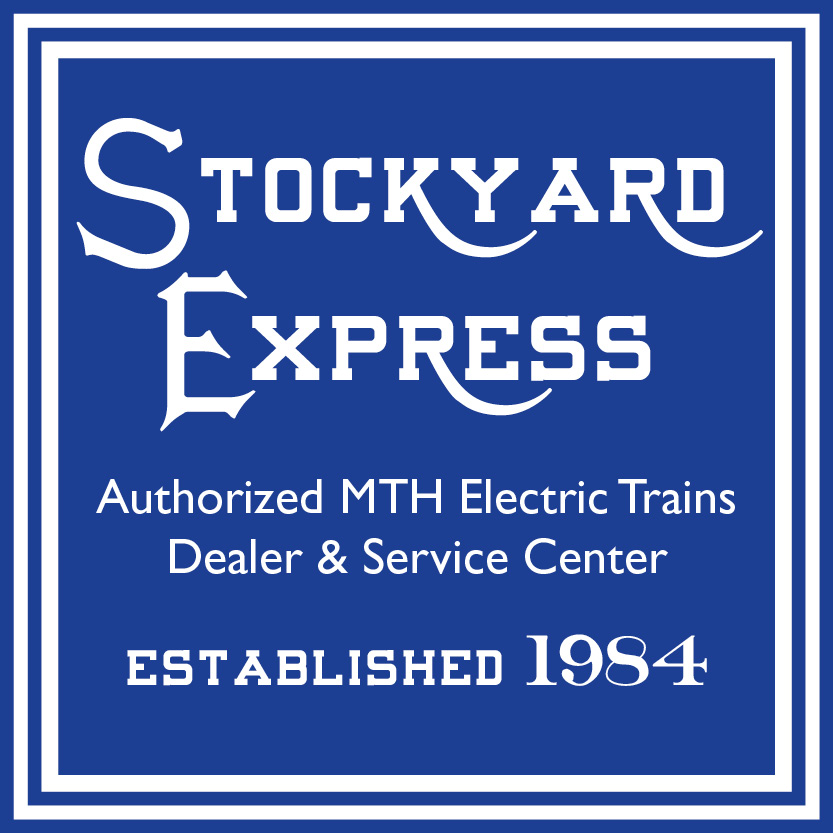Last Day For Preorder Price For These Custom Run FM Trainmasters Is August 20, 2022!!!
July 19, 2022 – M.T.H. Electric Trains has announced three exclusive, uncataloged Premier O Scale FM Train Master Diesel Locomotives for exclusive distribution for M.T.H. Authorized Retailer Stockyard Express. Each road name is available in two cab numbers, limited in production, and is only available directly from Stockyard Express for just $529.95 (Plus Freight). The locomotives are expected to arrive in October 2022.
Stockyard Express
49293 Plate Road
Oberlin, OH 44074
(440)774-2131
www.stockyardexpressllc.com
Email: stockyardexpress@aol.com

Item No. 20-21694-1 Akron Canton & Youngstown FM Train Master Diesel Engine With Proto-Sound 3.0
Cab No. 505
Early Order Price: $529.95

Item No. 20-21695-1 Akron Canton & Youngstown FM Train Master Diesel Engine With Proto-Sound 3.0
Cab No. 506
Early Order Price: $529.95

Item No. 20-21698-1 Westinghouse FM Train Master Diesel Engine With Proto-Sound 3.0
Cab No. 1300
Early Order Price: $529.95
Item No. 20-21699-1 Westinghouse FM Train Master Diesel Engine With Proto-Sound 3.0
Cab No. 1303
Early Order Price: $529.95
Uncataloged Premier O Scale Erie Lackawanna FM Train Master Diesel Locomotives Announced
July 22, 2022 – M.T.H. Electric Trains has announced two exclusive, uncataloged Premier O Scale Erie Lackawanna FM Train Master Diesel Locomotive paint schemes for exclusive distribution for M.T.H. Authorized Retailers Stockyard Express and Mr. Muffin’s Trains. Each locomotive is available in two cab numbers, limited in production, and is only available directly from Stockyard Express or Mr. Muffin’s Trains for just $529.95 (Plus Freight). The locomotives are expected to arrive in October 2022.

Item No. 20-21683-1 Erie Lackawanna FM Train Master Diesel Engine With Proto-Sound 3.0
Cab No. 1850
Early Order Price: $529.95

Item No. 20-21696-1 Erie Lackawanna FM Train Master Diesel Engine With Proto-Sound 3.0
Cab No. 1854
Early Order Price: $529.95
tem No. 20-21697-1 Erie Lackawanna FM Train Master Diesel Engine With Proto-Sound 3.0
Cab No. 1860
Early Order Price: $529.95
ABOUT THE PREMIER FM TRAIN MASTER DIESEL LOCOMOTIVE
Fairbanks Morse got into the locomotive business because it made submarine engines. FM’s unique opposed-piston diesel engine powered about half the U.S. Navy’s World War II submarine fleet and developed a great reputation for reliability; the adaptation to railroad equipment during and after the war seemed like a natural transition.
In the opposed-piston motor, each cylinder had a piston at either end and the combustion chamber in the middle. There were no valves or cylinder heads. Intake and exhaust occurred through holes in the cylinder walls. The upper and lower banks of pistons each powered a separate crankshaft, and the two crankshafts were linked together to power the locomotive. While this sounds like a complex way to build an engine, the O.P. diesel in fact had several advantages over a conventional motor: less moving parts, terrific acceleration, and about double the horsepower per cylinder.
In 1953 the O.P. engine reached its zenith in the Trainmaster. Introduced at the Railroad Manufacturers’ Supply Association show that year, FM’s new locomotive took the show by storm. It was the most powerful single-motored diesel locomotive of its era and had a brawny body to match its bold name. Emblazoned in bright yellow and red, four Trainmaster demonstrators barnstormed the country and walked away with any consist the railroads threw at them. For one brief moment, Fairbanks Morse looked like a contender.
Ultimately, however, the opposed-piston engine proved ill-suited to locomotive use. The bone-jarring railroad environment was much rougher on the motor than a submarine cushioned by an ocean. The top crankshaft proved prone to oil leakage. Perhaps most important, maintenance was a nightmare. Whereas a single bad cylinder in an Electro-Motive diesel could be accessed by pulling off one cylinder head, a cylinder repair in an O.P. engine required removal of the top crankshaft and removal or disconnection of the entire top bank of cylinders – which also meant the roof of the locomotive had to come off. Ultimately, only 127 Trainmasters were sold to 11 U.S. and Canadian railroads.

